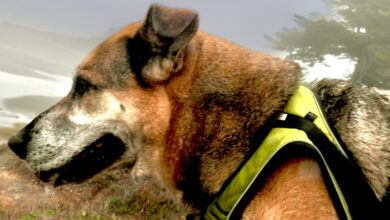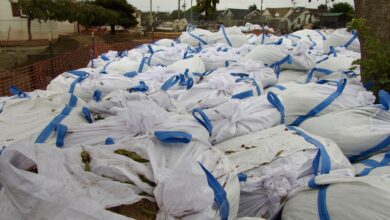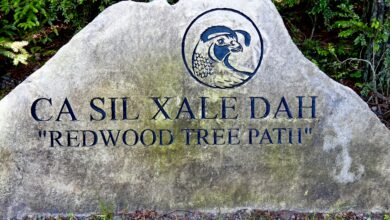Sick and dead sea lions pose risk to dogs

MENDOCINO Co., 10/14/23 — Recently, California sea lions have been hauling out of the water groggy, apparently sick, while others have washed up dead on beaches. Over August and September 10 dead sea lions were found in Fort Bragg and another 10 in Bodega Bay.
The Marine Mammal Center in Sausalito warns that sick-appearing marine mammals may be suffering from leptospirosis, a bacterial infection that can impact any mammal, including humans and dogs, and can cause kidney failure. There is a vaccine for dogs, which experts say should be given to dogs that spend time on the beach or along rivers.
Giancarlo Rulli, spokesman for the Marine Mammal Center, warns that people, especially those with dogs, should stay far away from beached sea lions. The Marine Mammal Center saw an upsurge in the number of reported cases this summer.
“We really are stressing to the public that whether it looks lethargic on the beach, or is a dead sea lion, it’s critical that the public keep their dogs on a leash and not approach either alive or dead sea lions,” Rulli said. “This is an outbreak of leptospirosis along the California coast, and we want to make sure that the dogs are kept safe.”
This past weekend, Madeline Richards of Fort Bragg reported seeing what was likely a sea lion in apparent distress, coming in and out of the water north of Ward Avenue. She contacted the Marine Mammal Center and shared a photo of the animal. Dogs are prohibited north of Ward avenue and south of Ten Mile River.

Rulli said the center is hopeful the surge in leptospirosis may be coming to an end, but is counting on volunteers like Richards to keep an eye out. The center can rescue young sea lions, but fully grown adults, especially males, which can weigh up to 900 pounds, are too large to be brought in for treatment.
“From January 1 through September of this year, the center has rescued and admitted just shy of 150 sea lions with suspect leptospirosis, mostly juveniles and subadults in terms of age class,” Rulli said. “To put things into perspective, the center admitted a record 300-plus sea lion patients due to suspected leptospirosis in 2018. Last year the number of live sea lions admitted to our hospital in Sausalito with suspected leptospirosis was north of 100 sea lions.”
Sea lions breed and give birth while gathered by the thousands in their breeding grounds in the Channel Islands. This close proximity is thought to be responsible for the outbreaks, which are rare in seals or other marine mammals, which don’t gather in such gigantic groups. The disease is spread through contact with the urine of an infected animal.
By email, Rulli wrote, “Since the 1980s, the Marine Mammal Center has seen yearly, seasonal outbreaks with major outbreak events causing 100 or more sea lion strandings happening every four to five years. The reasons for these periodic major outbreaks in sea lions is unknown. California sea lions rescued and diagnosed with leptospirosis are treated by trained veterinarians and animal care volunteers with antibiotics, fluids and other supportive care, such as gastroprotectants for stomach and intestinal ulcers at our hospital in Sausalito. Unfortunately, even with treatment, roughly two-thirds of the animals that strand with acute leptospirosis do not survive due to the severity of the disease by the time they come ashore.”
The Marine Mammal Protection Act of 1972 was primarily intended to save whales. It has stabilized or restored most whale populations, but sea lion and seal populations have skyrocketed. Sea lion numbers have tripled since the mid-1970s.
The burgeoning populations have changed the entire ocean ecosystem. The marine mammals devour thousands of endangered salmon and can wipe out an entire run if they trap the elusive salmon against a dam, even one equipped with a fish ladder. Many salmon fishermen blame the burgeoning sea lion and seal population for their closed fisheries. The population explosion is also believed to make possible a greater spread of disease.
In Oregon, there are new programs to cull sea lions out of concern for endangered salmon and other ocean species, a measure California fishermen have been unable to get traction with.
Killing of sea lions has been going on In Oregon at both the Bonneville Dam since 2008 and at Willamette Falls a decade later.
On the Atlantic coast, seals also now exceed historic numbers and are causing major headaches for fishermen.
Sea otters are an unforeseen victim of the growing sea lion population. The increase in sea lion numbers has caused great white shark numbers to expand, studies show. Moreover, the sharks have changed their diet to eat more sea lions. This has caused them to attack sea otters, which they apparently mistake for a seal or sea lion. The sharks don’t like the taste and spit out the otters after killing them. This has happened so often it’s documented as one of the key reasons why sea otters are unable to migrate between Monterey and San Francisco bays.
Elephant seals, which can be larger than sea lions, have been brought back from the brink of extinction and are now being seen on beaches in Fort Bragg. LIke harbor seals, elephant seals give birth by coming out of the water on long stretches of open beach like the areas between Ward Avenue and the Ten Mile River. This stretch of the coast is closed to dogs, even on leash, a measure originally taken to protect the skittish snowy plover. Lisa D Walker-Roseman photographed several sick sea lions there this summer during the outbreak. She also has seen three elephant seals over the past several years. The Marine Mammal Center is eager to get documented cases of elephant seals, which Rulli said are making their way north as the population flourishes. They are also interested in sightings of the Guadalupe fur seal, another large seal that is pushing north as waters warm. They were hunted by fur traders into what scientists thought was extinction in the early 1900s. Later, a small population was discovered on Guadalupe Island. Now there are more than 30,000 of them, seen all over California and possibly finding new breeding grounds.

As bad as sick sea lions can be for dogs, dogs can be worse for all marine mammals, especially during their breeding season. During the breeding months of April and May encounters with off-leash dogs can cause mother seals to abandon pups, Ruilli said. Seals will casually approach dogs and humans in rivers, making some people think it’s all right for them to interact year-round. Ruilli said 25 percent of the rescued animals the Marine Mammal Center nurses back to health have been hospitalized because of human and dog interactions. People also cause strandings by approaching seal pups. The mother seals may never return to rear these pups.

To report sick and/or injured marine mammals in distress, keep your distance and call the Marine Mammal Center’s hotline at 415-289-SEAL (7325). A trained responder will make an informed evaluation if the animal needs to be rescued.
For dead marine mammals, don’t call the Marine Mammal Center. Call the California Academy of Sciences at 415-379-5381 or email marinemammals@calacademy.org
Volunteers are the key to the success of the marine mammal network, especially in further reaches of the range of the Sausalito center. The center covers from San Luis Opisbo to the Humboldt County line.
Rulli said, “We’ll likely be putting a call out for volunteer recruits in northern Sonoma County and Mendocino County around the holidays.”
Karen Helms, director of the Northcoast Marine Mammal Center in Crescent City, described the leptospirosis situation north of Mendocino County as being similar to what Rulli described. She said the illness cycles seem to come when waters are warmer.
The post Sick and dead sea lions pose risk to dogs appeared first on The Mendocino Voice | Mendocino County, CA.




